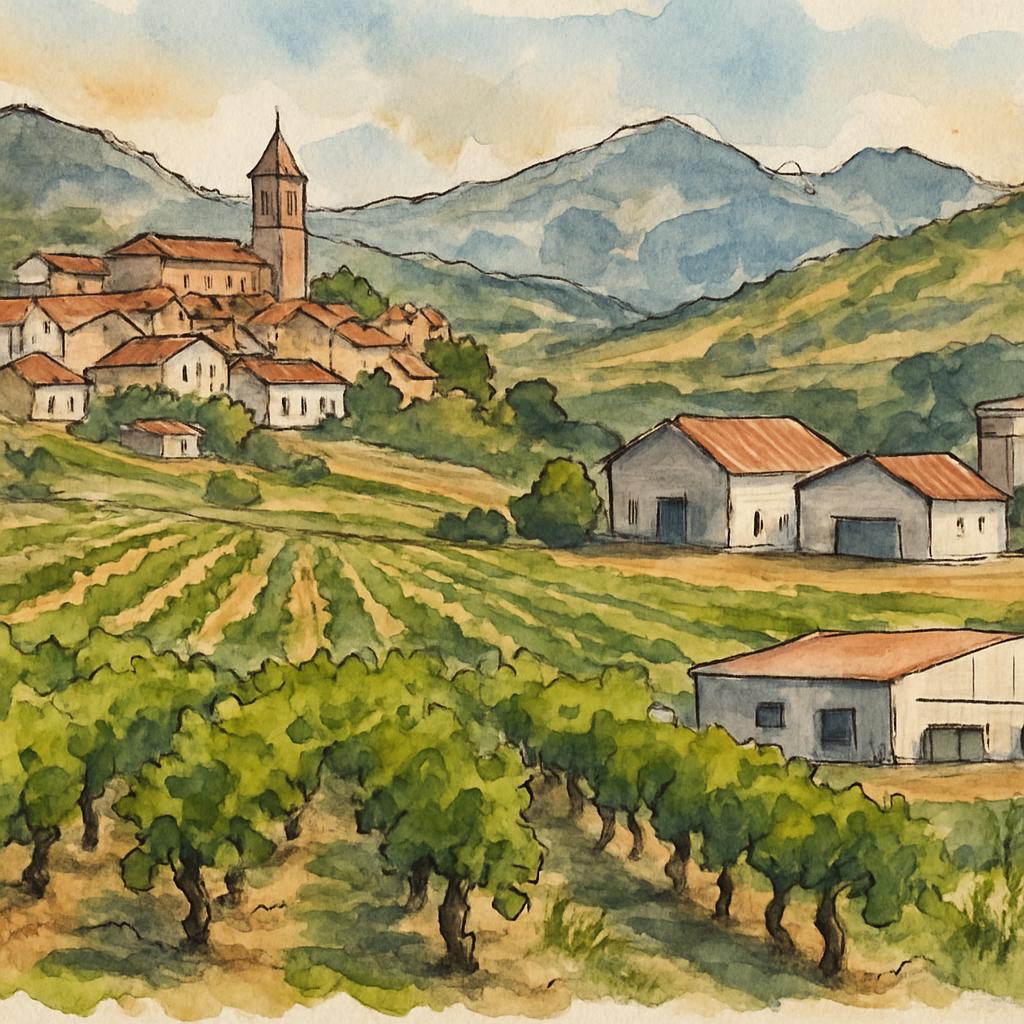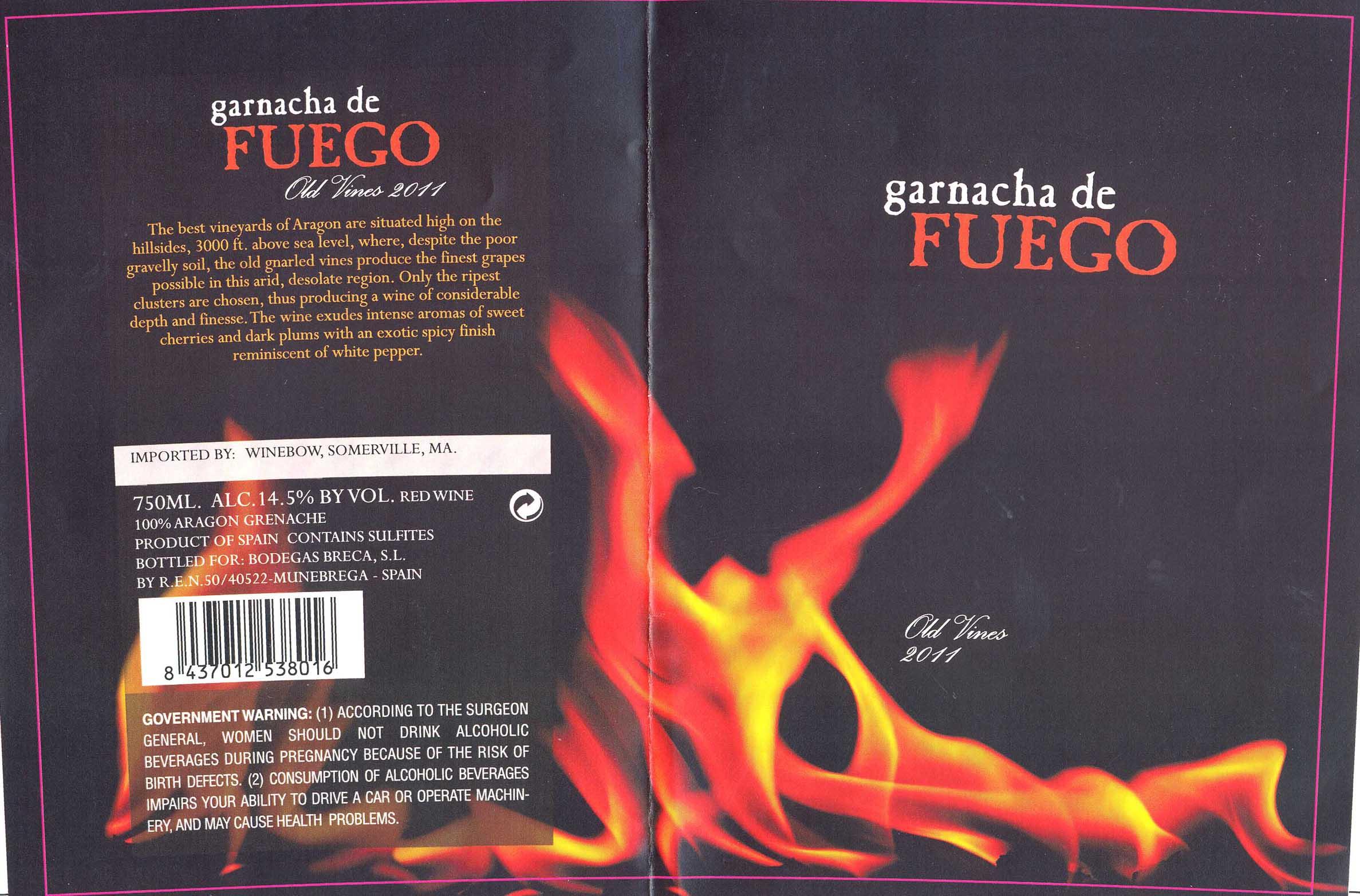Terroir of Munébrega
Munébrega's vineyards thrive in a continental Mediterranean climate with hot, sunny days and cool nights, helping to preserve grape acidity and develop complex flavors. The region gets most of its rainfall in spring and autumn, while dry summers and cold winters are ideal for vine dormancy.
The soils here are a mix of limestone, sandstone, clay, and gravel. Shallow, calcareous soils over limestone encourage deep rooting and concentrated fruit, perfect for bold reds like Garnacha and Tempranillo. While late spring frosts and hail can be challenging, the long, sunny growing season ensures grapes mature fully, often into October.
Steady winds, including the cierzo, minimize disease, supporting the production of healthy, age-worthy wines from this picturesque Spanish village.
Notable Wineries in Munébrega
Munébrega, nestled in the heart of Aragón, thrives with its unique wine culture, spotlighting a few remarkable family-run estates and small cooperatives. Despite the absence of its own DO, the village delivers enticing wines under IGP labels like Vino de la Tierra de Aragón. Its proximity to famed regions such as Calatayud and Cariñena enhances its grape reputation.
-
Bodega San Nicolás: A historic cooperative known for its Garnacha-based reds, emphasizing traditional methods.
-
Viñedos Munébrega: A family-owned vineyard focusing on Tempranillo and Macabeo, offering vibrant expressions of the local terroir.
-
Finca La Fuentecilla: Celebrated for its Syrah and Cabernet blends, integrating modern techniques for a sophisticated profile.
Sustainable Winemaking in Munébrega
In Munébrega, sustainability is naturally woven into the fabric of winemaking. The region's dry climate and varied soils lend themselves to low-input practices, with many vineyards embracing dry farming. Techniques such as planting cover crops to prevent erosion and enriching the soil with organic materials are commonplace. Hand-harvesting is often employed to minimize impact on the vines.
In the winery, natural yeast fermentations and minimal sulfur use allow the wines to reflect their unique terroir. Many producers use solar power, compost grape leftovers, and recycle water to reduce their ecological footprint. While still in its infancy, biodynamic farming is beginning to find a foothold here, underscoring a commitment to environmentally conscious viticulture.
These efforts ensure the continuation of Munébrega's rich viticultural heritage, aligning tradition with a sustainable future.
Wine Tourism in Munébrega
In Munébrega, wine tourism merges seamlessly with the region's strong agricultural roots, offering guests an authentic glimpse into local viticulture.
Visitors can book appointments to explore family-run wineries, where Garnacha and Tempranillo wines reflect their rich terroir.
These intimate tours often include guided tastings paired with regional cuisine, vineyard walks, and hands-on harvest experiences.
The area's rural charm invites scenic drives or cycling along picturesque trails.
Overnight stays at casas rurales or agritourism lodgings offer a taste of traditional life, complete with local wines and dishes.
Many choose to pair a day of wine exploration with visits to nearby historical sites like Calatayud or the relaxing thermal spa town of Alhama de Aragón.
With its personal connections and uncrowded settings, Munébrega provides a genuine and sustainable wine tourism experience.



